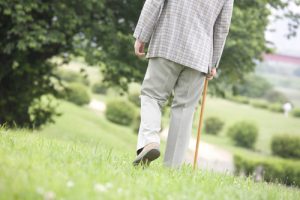We all know that the senior care field needs some serious help. With the Silver Tsunami heading our way, it’s only going to get worse. At this moment, around 25 million Americans depend on assistance from other people or devices for basic daily living. But there just isn’t enough help for seniors.

Study from Johns Hopkins University
Researchers from the university looked at how seniors respond to changes in physical function, which isn’t studied often or understood well. They showed that around 1/3 of adults who live in the area that they focused on have substantial needs for assisted living. The community has almost 13 million seniors that need help with bathing, eating, getting dressed, using the toilet, and more.
Around 1/ 3 only need help with one or two things, and another third do pretty well on their own. It’s that final third that is worrying.
There Isn’t Enough Human Help for Seniors
Nearly 60% of seniors with compromised mobility say they stay in their homes instead of going out. 25% say they stay in bed. 20% of seniors who can’t dress themselves go without changing because they don’t have help. 27.9% of those who need help with toileting issues have accidents.
In a different John Hopkins study in 2017, they found that 42% of people with probable dementia or people who have a hard time doing daily tasks, didn’t get help from family, friends, or paid caregivers. 21% of seniors that had at least three chronic conditions and high need didn’t have any help.
Help from Devices Isn’t Enough
Until this study, it was unknown how many people use an assistive device and how often they use them. Assistive devices can include canes, walkers, wheelchairs, scooters, shower seats, tub seats, grab bars, reachers, and specially designed clothes.
60% of seniors surveyed used at least one device, usually for bathing, toileting, and moving around. 20% used 2 or more tools, and 13% received personal assistance. 5% had issues with daily tasks but didn’t have help or made any adjustments. Only 1% got help.
Why Aren’t Seniors Getting Help?
The biggest problems that experts noted is that Medicare doesn’t pay for most of these nonmedical services. As a result, seniors who have little to no money go without assistance despite having Medicaid.
A little more than 10% of seniors with high needs had at least one type of hardship, like not being able to pay expenses (5.9%), utilities (4.8%), rent (3.4%), or skipping meals (1.8%). Some people had more than one of these difficulties at once.
This kind of stress puts seniors’ health at risk.
Researchers believe that Medicare needs to rethink how to support their beneficiaries.
Things have started to change like with the CHRONIC Care Act passing. The act lets Medicare Advantage plans offer supplemental benefits like wheelchair ramps, bathroom grab bars, transportation, and personal care to chronically ill member.
Though it’s not known how far these benefits will go. Plus, 39 million people enrolled in traditional Medicare are left out.
Read more here.

